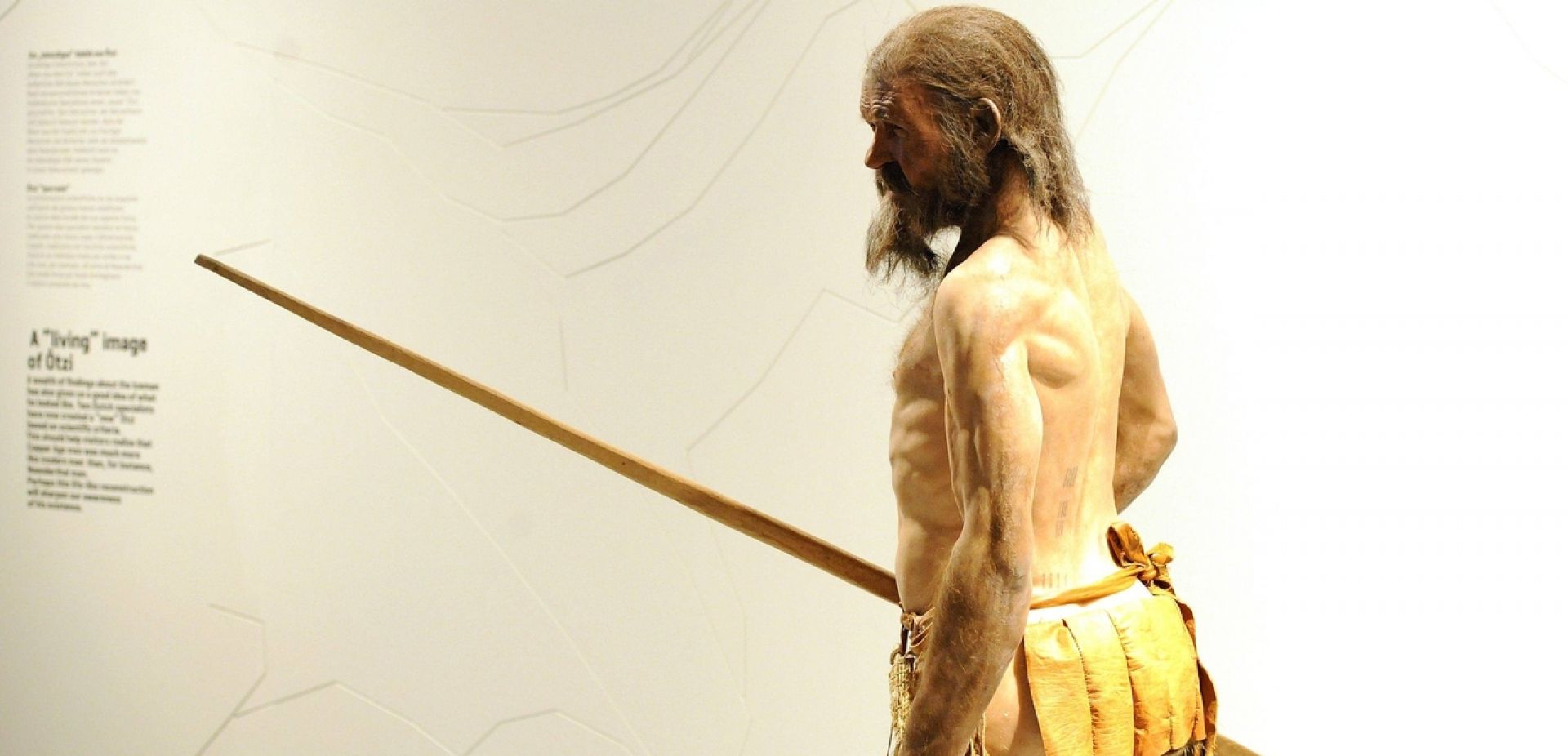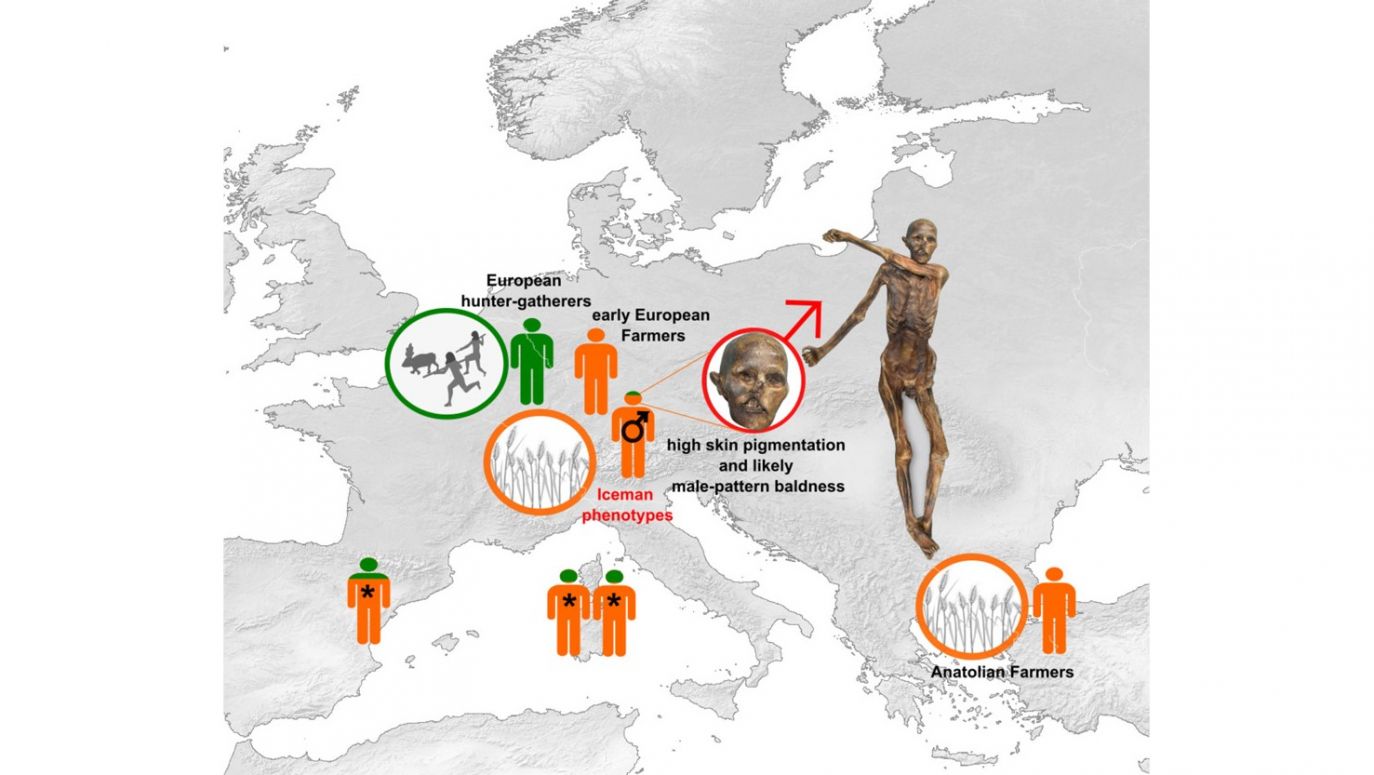Of course, in 2012 and later, his possible origin or genealogy was genetically tested. The Y chromosome inherited from his father allowed him to be assigned to the most common haplogroup in South Corsica, although quite rare (G-L91). In 2013, the remains of probable relatives of the Iceman were found in Tyrol. Their common ancestor was supposed to have lived about 10-12 thousand years ago, although Ötzi himself could have died some 5,300 years ago. Research on the mtDNA inherited from the distaff side showed that our hero's mother belonged to a previously unknown European branch of the K1 haplogroup, which is difficult to find today. This research, especially later approaches to autosomal DNA (that is, everything we have in the genome that is not XY sex chromosomes or mtDNA), would show that Ötzi originated from a migration out of Anatolia to Europe in the 7th millennium B.C., when farmers replaced a population of earlier, European hunter-gatherers. Moreover, a solid admixture of the most common European DNA today, namely Indo-European, was found in it, to which I will return in a moment.
That’s all when it comes to the history of research. Nevertheless, over the last decade, there has been a rapid increase in modern and archaic DNA sequence databases, which allows us to determine relationships much more precisely. In addition, current methods of archaic DNA sequencing enable more accurate verification of genetic characteristics. What's more, they screen out possible contamination with contemporary DNA. Nucleic acids chemically age, so researchers separate from the mass of data only those sequences where this chemical marker of archaicity is found and further analyse only them. Sometimes, they constitute just a small percentage of all obtained sequences. The old DNA simply breaks down over time, so even a small admixture of modern human epidermis adds much more high-quality DNA to the sequence than even a very abundant sample from a prehistoric tooth. Therefore, to overcome this puzzle, scientists must sequence a lot of archaic material.
 SIGN UP TO OUR PAGE
SIGN UP TO OUR PAGE 
Despite these problems, Professor Krause's team from Leipzig University obtained almost the entire Ötzi genome, which was very good quality. The authors of the "Cell Genomics" journal publication note that unlike previous research, they did not find any "steppe" origin in the Iceman organism. What the researchers had in their mind was the previously recalled gigantic migration to Europe - about five thousand years ago - from the Pontic steppes and further Asian regions. This is how the people called today Proto-Indo-European - due to the language they spoke - came into being, e.g. the Yamnaya and the Corded Ware culture community. Ötzi turned out to have nothing in common with the 19 relatives found in Tyrol who were supposed to inherit the axe, the knife and the backpack (oh well, it’s nothing to laugh about; many would like such an inheritance, wouldn’t they?).
As geneticists from Leipzig further argue, "he has retained rather the highest percentage of ancestry from Anatolian-agricultural migration, common among modern European populations" (i.e. 92 percent! - today most of this DNA is found in the indigenous inhabitants of Sardinia, approximately 50 percent). That "indicates a rather isolated Alpine population with limited gene flow from populations related to hunters, gatherers and their own ancestors". Here we learn that the ancestors of the Iceman came - not only "to a large extent", but in a direct line – from the migration to Europe out of what is central Turkey now (earlier by some 2-3 thousand years from the arrival of the Proto-Indo-Europeans). Thanks to this, agriculture appeared in Europe because these Anatolians, with seeds and tools in hand - that is, with a gigantic achievement of civilisation - began to wander, and over time, they spread throughout our continent. Eventually, they began interbreeding with the existing, probably much more primitive in their eyes, native hunter-gatherer population.


 SIGN UP TO OUR PAGE
SIGN UP TO OUR PAGE 




